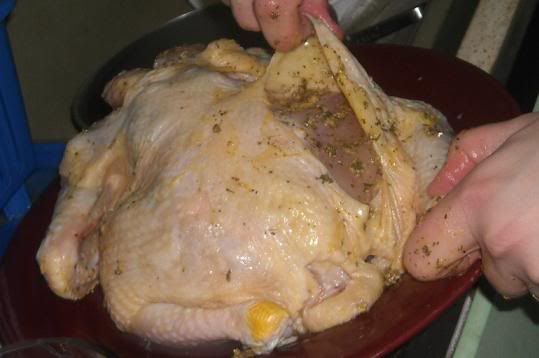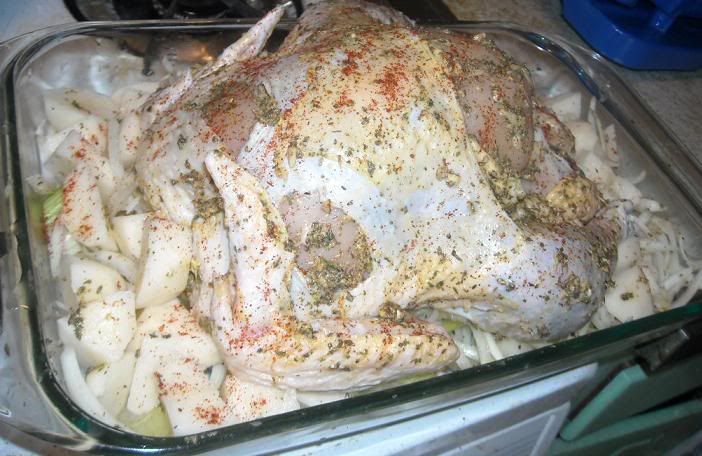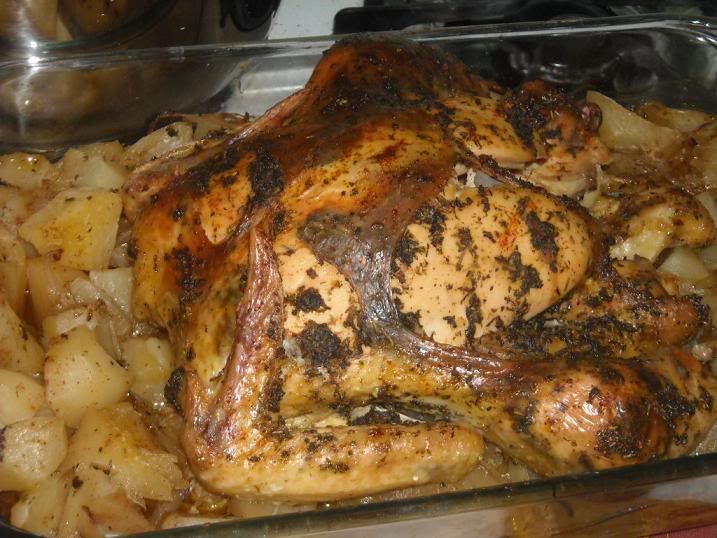
Most people see raw chicken and freak out because they hear all the crap the media spews about salmonella poisoning. I'm here to tell you RELAX because properly cleaning and preparing raw meat is really easy, as long as you clean it well and cook it until it's done. The first rule of preparing raw chicken is that we always wash it very well. Why? Because chickens are kept in not-so-sanitary conditions and unless you're eating Poulet de Bresse or even the American equivalent, Blue Foot Chicken, it's most likely going to make you sick as a dog if you don't clean it up and cook it properly. Hell, I'd even wash the shit out of Poulet de Bresse just because I can. This is not meant to discourage you, because cleaning and cooking it isn't as difficult as you may think.
Before we even get to the raw meat, let's talking about cleaning.

This is a complete sin, but not many Americans wash their hands properly. I see it when I'm in the men's room and these dudes just go in, do their business and rush out again without even glancing towards the sink. It's one of the main reasons people get sick at restaurants. You travel the subway to your favorite restaurant, put your hands on the poles, touch the menus, your silverware, and don't clean up before your burger comes. Then what happens? You get that splatter of ketchup on those same filthy hands which you make sure to greedily lap up. Then later when you're on the bowl for 40 minutes because your body is trying to flood out the toxic bacteria, you blame the food. (And that's if you're lucky- people can get Hepatitis from not washing after touching those poles!)
When we're kids, our mothers teach us to always wash up before mealtime. Why do most of us get out of this practice? Did you know that the Health Department recommends you wash your hands with soap for at least 30 seconds before washing it off? Not just your palms either, folks. Bacteria hides everywhere: under your nails, between your fingers, and on the backs of hands too where most people neglect to wash.
Just like you wash your hands, you should scrub your chicken. Make sure you leave the water cool, no more than 70 degrees F or it will cook. If you're making a whole chicken, make sure to get in the crevices, under the limbs, between the meat and skin, and into the middle. Remove the giblets sack before cooking, otherwise you will have a complete disaster. What are the giblets, you ask?

All the organs you don't really want to eat are usually found in a little plastic pouch stuffed inside a whole chicken. Some people deep fry these and serve them to their families, but um, *gags* no thanks. As much as I hate wasting food, I toss these away without remorse. I've eaten the neck before but it's full of bones and has virtually no meat on it, so unless it's still attached, don't bother cooking it.

As for the skin, I like to take the skin off when I make chicken parts, and even go so far as to trim the excess fat off because it makes the meat leaner. On whole chickens however, I use the skin as a flavor seal because I put herbal rubs between the flesh and skin. It's a neat trick I learned a long time ago and I will share a really good recipe with you today.
I was originally going to make nymphie's BBQ recipe for the chicken but Tammy gave me a hard time about it so I made an herb and butter rub instead.

Most people are intimidated by whole chickens, thinking they'll take too much work, too much time to cook and be too much of a hassle... but I find whole chickens easier to make, especially if it's for a large group of people. You just can't be afraid to get your hands a bit dirty. =D
I'm not sure of the exact measurements of the rub, but I used dried basil, parsley, salt, pepper, onion, garlic and chili powder with about 8-10 cloves of garlic, then put 2 generous Tablespoons of non-hydrogenated margarine into the mix and pulsed it with a food processor. One of the many tricks I learned to getting my meat, starch and veggies all done at once is putting it right in with the chicken. Underneath that magnificent bird is 1 1/2 sliced yellow onions, 6 potatoes, peeled and cut, and 5 chopped celery stalks. Whatever rub you have leftover from smothering your bird with goes over the veggies. I even sprinkled a bit of paprika over the chicken itself to help give it color. What will happen is that as the bird cooks, the chicken fat and melting rub will flavor the veggies, and visa-versa. It may be a bit of work to get everything together, but once it's done, you cover it with tin foil and pop it into a preheated 350F oven and forget about it for two hours.

Then all you do is take it out, remove the tin foil and pop it back in for another 30-40 minutes, and you have this beauty for your family to feast upon.

The general rule with roasts and whole poultry is that you cook it for 30 minutes for every pound it weighs. Unless you're braising the meat, making a Pernil, or a sous vide, two and a half hours will be enough to thoroughly cook most anything. The meat will be tender, flavorful and falling right off the bone. And the best part is that any trace of salmonella will be long gone. See? Nothing to be scared of.
I encourage anyone to work with roasts and whole birds, if just to conquer their fear of it. And I challenge you guys to post pictures of those birds here!!

No comments:
Post a Comment